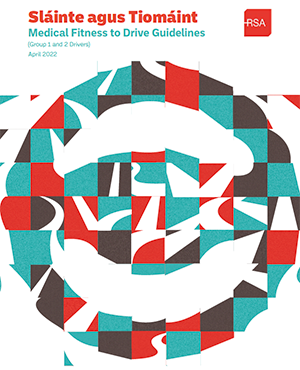Background

The Road Safety Authority have produced an excellent "Sláinte agus Tiomáint 2025" document detailing information for doctors and others regarding a patient's fitness to drive.
Just a few points:
You have an ethical and legal duty to maintain patient confidentiality.
A doctor's duty is to:
- Assess the person’s medical fitness to drive based on the current Sláinte agus Tiomáint medical standards
- To advise the person regarding the impact of their medical condition or disability on their ability to drive and recommend restrictions and ongoing monitoring as required
- To advise the person of their responsibility to report their condition to the NDLS if their injury or illness may affect their ability to drive
- Where a doctor is of the opinion their patient is continuing to drive when advised not to do so, they should submit a NDLS medical report form (D501) deeming the patient unfit to drive with a cover email stating their concerns to medicalfitness@rsa.ie or phone the RSA 096 25000 and the RSA will engage with the patient on the matter. Please CC email yourself to ensure you keep a copy
There is a difference between the restrictions on Category 1 (car, motorbike, tractor) and Category 2 (bus, lorry etc) licence holders.
Please read the document but it is very comprehensive so I have added a few links to specific recommendations for different groups of conditions below.
Conditions
Neurological disorders
Epilepsy standards for Group 1 and 2.
- 1st unprovoked seizure
- Provoked seizures
- Vertigo
- Brain tumours
- Head injury
- Subdural/subarachnoid bleed
Cardiovascular disorders
- Syncope
- Stroke / TIA
- Angina
- ACS
Drug and alcohol misuse and dependence
Visual disorders
Respiratory and sleep disorders
Others
Links
- RSA "Medical Fitness to Drive" page (updated 2025)
- NDLS medical report form D501, or a local (fillable) copy
- NDLS advice for patients after injury / splint etc.
- NDLS Patient Leaflets on Health and Driving
- For independent assessments try http://www.southernmobility.ie/html/assessments.html